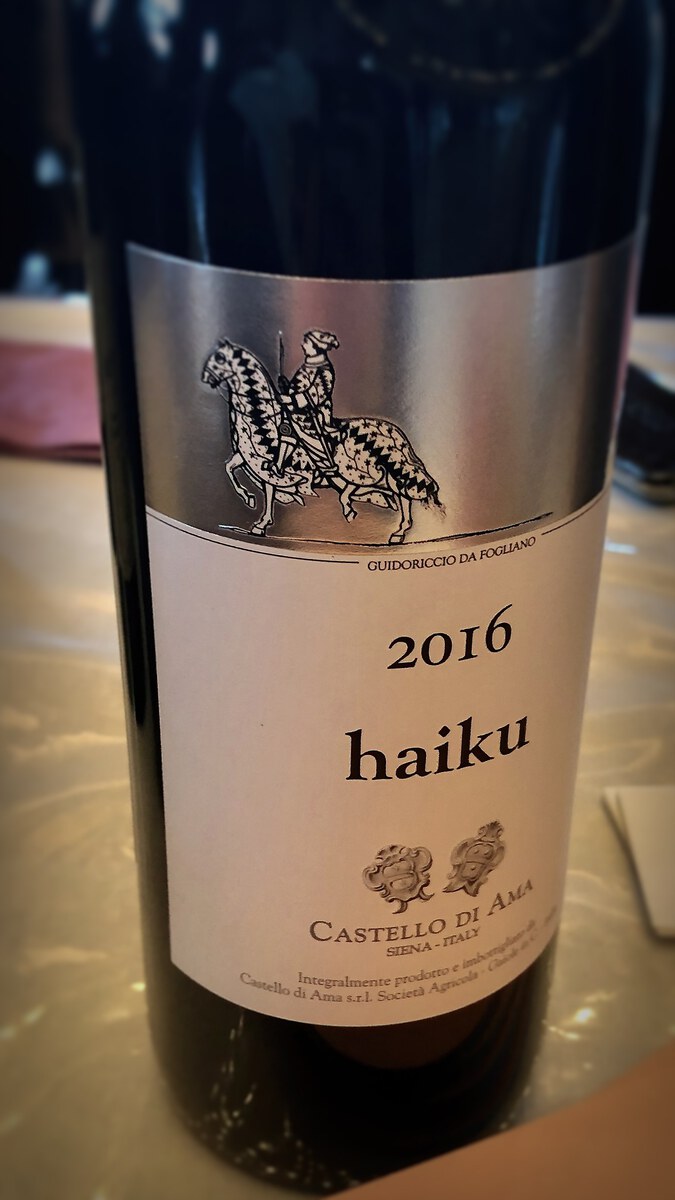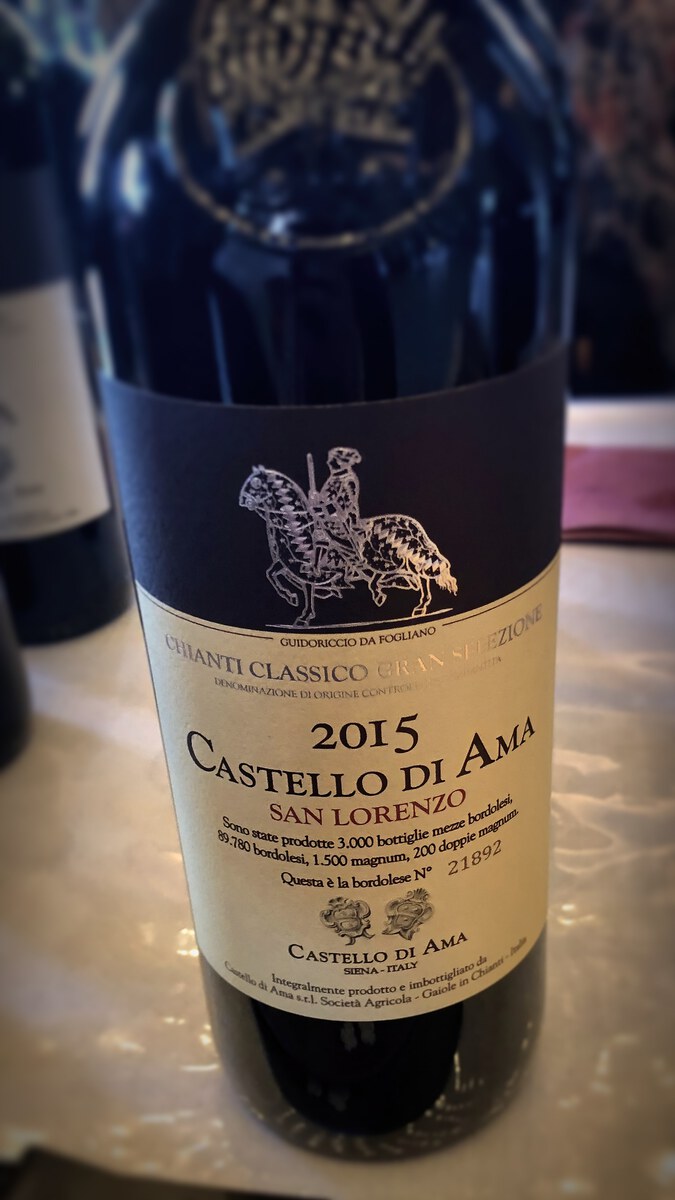Castello di Ama "Haiku" 2016
Blend of Sangiovese / Merlot / Cabernet SauvignonVibrant and complex. Berries, nutmeg and sandal wood.
Tasting Notes
The 2016 Haiku from Castello di Ama is vibrant and complex.
The nose opens with berry notes to leave way to a round spice character; nutmeg and sandal wood come to mind.
On the palate it is round and has an elegant bitter aftertaste, very structured.
The finish is long.
This bottle would improve with 6 to 8 years in the cellar.

|
|
Castello di Ama |
|
|
Haiku |
|
|
Red & Still |
|
|
Italy |
|
|
Toscana |
|
|
Sangiovese, Merlot, Cabernet Sauvignon |
|
|
2016 |
Learn more
Castello di Ama
Castello di Ama is a relatively young winery in Chianti Classico. That is, even if the estate makes wine since the 1970s!
At Ama they produce beautiful wine following the lead of a Bordeaux trained oenologist.
But this winery wants to offer more than wine. As true Italians they transformed the castle and what they do into art. They partnered with several international artists who got inspired by the estate and the landscape. Their pieces are all around Ama winery and open to the public all year around. Visiting Ama is more than wine tasting then. It’s a walk through an unusual contemporary art gallery.
Link to here...Wines Related To Castello di Ama
Castello di Ama "San Lorenzo" 2015
Versatile and elegant. Cherries and berries, dried violets.
Sangiovese
Wine making grape
Sangiovese is a red Italian wine grape variety named after the Latin sanguis Jovis, which means “Jupiter’s blood.” Though it is native to most of central Italy, from Romagna to Lazio, Campania, and Sicily, it is best known outside of Italy as the sole component of Brunello di Montalcino and Rosso di Montalcino, as well as the primary component of the blends Chianti, Carmignano, Vino Nobile di Montepulciano, and Morellino di Scansano, though it can also be used to make varietal wines like Sangiovese di Romagna
Link to here... | Derived from 'Sangiovese' on WikipediaMerlot
Dark blue-colored variety of wine-making grape
Merlot is a dark blue–colored wine grape variety that can be used to produce both blending and varietal wines. Merlot is thought to be a diminutive of merle, the French word for a blackbird, which is most likely a reference to the grape’s color. Merlot is a common grape for blending with the sterner, later-ripening Cabernet Sauvignon, which appears to be higher in tannin, due to its softness and “fleshiness” combined with its earlier ripening.
Link to here... | Derived from 'Merlot' on WikipediaCabernet Sauvignon
Red-wine variety of grape
Cabernet Sauvignon is one of the most well-known red wine grape varieties in the world. It is grown in nearly every major wine-producing region, in a wide range of climates, from the Okanagan Valley in Canada to the Beqaa Valley in Lebanon. Cabernet Sauvignon rose to popularity as a result of its use in Bordeaux wines, where it is often blended with Merlot and Cabernet Franc. The grape spread through Europe and into the New World, settling in places like California’s Santa Cruz Mountains, Paso Robles, Napa Valley, Hawkes Bay, South Africa’s Stellenbosch region, Australia’s Margaret River and Coonawarra valleys, and Chile’s Maipo Valley and Colchagua. It was the world’s most widely planted premium red wine grape for most of the twentieth century, before Merlot overtook it in the 1990s. By 2015, however, Cabernet Sauvignon had reclaimed its place as the most widely planted wine grape, with 341,000 hectares (3,410 km2) under vine globally.
Link to here... | Derived from 'Cabernet Sauvignon' on Wikipedia

